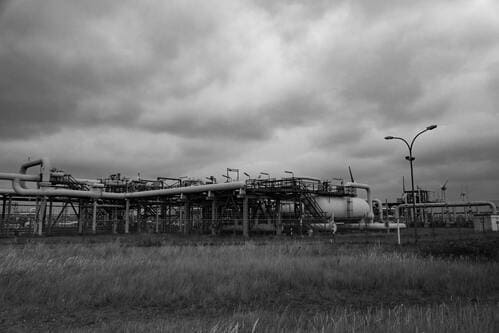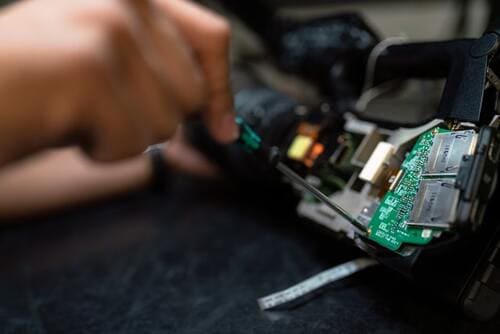Thanks to all the advantages of the fiber optic sensor (FOS) technology and its diversity of instruments, described in the previous article, there are a range of applications. Structural health monitoring of the concrete constructions is proved to be the most effective tool for management of the infrastructure, due to the latest results.
Here is a list of the most common applications where fiber Bragg grating sensors can be installed.
Bridges
The lifetime of every large bridge is several decades or hundreds of years, including the period of construction and repair stages. Despite the improved quality of the bridges’ planning, it is still difficult to accurately predict its lifetime because of the complex structures and external influence like corrosion or the natural disasters like earthquake, flood, etc.
The structural health monitoring in real time gives an insurance of the safety of bridges. According to the researchers, this fiber optic system can be applied on the different stages of the bridge construction. Most of all, these fiber optic monitoring systems are used in the operation or safety phase of bridges and extend their lifespan.
The FBG structural health monitoring systems include fiber optic sensors, multiplexers, FBG interrogators, local and remote computers.
All in all, the fiber optic monitoring systems provide the following advantages:
- Control of state of metal structures;
- Control of the bridge oscillation frequency;
- Notifications for the personnel on screen;
- Extending the bridge’s lifetime, etc.
Moreover, when we talk about the railroad bridges, it is also possible to evaluate the lower bridge beam condition.
Buildings
The state of the load-bearing structure and building foundation is a crucial element of safety. And fiber optic sensors have made a great contribution to it.
The structural health monitoring can be applied whether for the buildings under construction or for the old houses when there is a severe level of damage and degradation of materials. Unfortunately, the majority of the houses that were built before, mostly in the previous century, are particularly vulnerable to environmental actions. Basically, because there was no specific constructive detailing that would provide the age resistance of the constructions.
The degradation usually includes steel corrosion, debonding of concrete, etc. It becomes visible when the damage is greatly extended on the elements of the structure. If the moment for the structural repair is missed, it often leads to its more complex and expensive modernization. At worst, there is a need for demolition.
Mostly, fiber optic technology is used for:
- Control of the strain-stress state of metal basic structures and foundations;
- Monitoring of the cracks and foundation shrinkage in reinforced concrete structures;
- Snow load control.
Tunnels
The structural health monitoring systems have also made a great contribution into tunnel construction.
The most important safety factor in tunnels, as in many civil structures, is the deformations. Fiber optic sensors can monitor and provide the useful data both within the construction phases and over the long term. In the long term, monitoring calls a very stable and precise system that can compare deformation measurements over long periods. In the short term, the monitoring system can measure deformations that occur for relatively short periods.
The structural health monitoring system influences the tunnels’ management and security by providing in-time maintenance and restoration. There is a problem of excessive deformations which can seldom affect the structural security, but can cause durability problems.
For example, such fiber optic monitoring systems can be applied during the highway tunnel’ construction to measure the tunnel load or to monitor railway tunnels. Besides, the knowledge of the tunnel’s behavior helps while the introduction of the modern building techniques or for the prolongation of its service life in the future.
Hydroelectric and Wind Power Plants
Fiber optic solutions have found their applications for nuclear, hydroelectric, wind power plants. Aging management of the components is directly related to their operation. Safety requirements guarantee their safe operation but still are difficult for operators to track fully. All kinds of power plants require the accurate and qualified assessment of the thermomechanical loads and other parameters that can lead to the early aging of the equipment.
Fiber optic sensing is one of the best monitoring and maintaining systems for the plants. Structural health monitoring (SHM) of hydroelectric plants, wind turbines and others gives operators real-time information of the components’ condition.
Dams
As for the dams, fiber optic technology helps in detection of the seepage flow changes in a dam structure. Dams usually face different problems connected to external loads such as water level changes, seismic disturbances, etc. Any changes in numbers can be a sign of erosion which is the most common cause of the dam failure.
Fiber optic system allows operators to get the data from all over the dam as measurements are taken along the full length of the cable. Distributed sensing detects the tiniest changes in rates that otherwise can lead to the operational failures.
Fiber optic sensors are able to measure various parameters and quantities in structural health monitoring. Depending on the required operating principles, specialists discuss which type of FBG sensor is the best suitable and their way of embedding and surface mounting. All in all, their final goal is to find the most effective fiber optic solution for the operating principle and potential applications in SHM.
The short list of applications can be also found on our website.
Optromix is a fast-growing vendor of fiber Bragg grating (FBG) product line such as fiber Bragg grating sensors, for example, fbg strain sensors, FBG interrogators and multiplexers, Distributed Acoustic Sensing (DAS) systems, Distributed Temperature Sensing (DTS) systems. The company creates and supplies a broad variety of fiber optic solutions for monitoring worldwide. If you are interested in structural health monitoring systems and want to learn more, please contact us at info@optromix.com







 It is not a secret that fiber optic technology already has a wide range of different applications starting with medicine and ending with road monitoring. However, scientists still have a lot of spheres for FBG sensors implementation. And the VR ecosystem is one of them.
It is not a secret that fiber optic technology already has a wide range of different applications starting with medicine and ending with road monitoring. However, scientists still have a lot of spheres for FBG sensors implementation. And the VR ecosystem is one of them. A collaboration of scientists from different countries (China, Pakistan, and Hong Kong) have developed new 3D printed FBG sensors that can help in creating the ‘smart beds’. Scientists have worked to determine the main advantages of the innovative 3D printed FBG sensors and their applications in different spheres.
A collaboration of scientists from different countries (China, Pakistan, and Hong Kong) have developed new 3D printed FBG sensors that can help in creating the ‘smart beds’. Scientists have worked to determine the main advantages of the innovative 3D printed FBG sensors and their applications in different spheres. Scientists from Latvia made a number of experiments using fiber optic technology for monitoring the condition of the road surface. They chose special FBG sensors that can collect data about roadway changes, like changes in the strain and temperature. These fiber optic solutions that also include applying fiber Bragg gratings (FBGs) will help in designing reliable roads and planning for road repairs.
Scientists from Latvia made a number of experiments using fiber optic technology for monitoring the condition of the road surface. They chose special FBG sensors that can collect data about roadway changes, like changes in the strain and temperature. These fiber optic solutions that also include applying fiber Bragg gratings (FBGs) will help in designing reliable roads and planning for road repairs. During the last 60 years, fiber optic technology has been applied to improve the efficiency of developed systems in various spheres like medicine, vehicles, and other industries. Modern fiber optic solutions expand the abilities by implementing levels of data and sensing technology in the energy, medical field, and even aerospace. There are various fiber optic solutions that help researchers improve their development and make new discoveries in science.
During the last 60 years, fiber optic technology has been applied to improve the efficiency of developed systems in various spheres like medicine, vehicles, and other industries. Modern fiber optic solutions expand the abilities by implementing levels of data and sensing technology in the energy, medical field, and even aerospace. There are various fiber optic solutions that help researchers improve their development and make new discoveries in science.